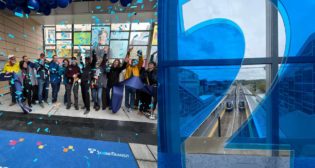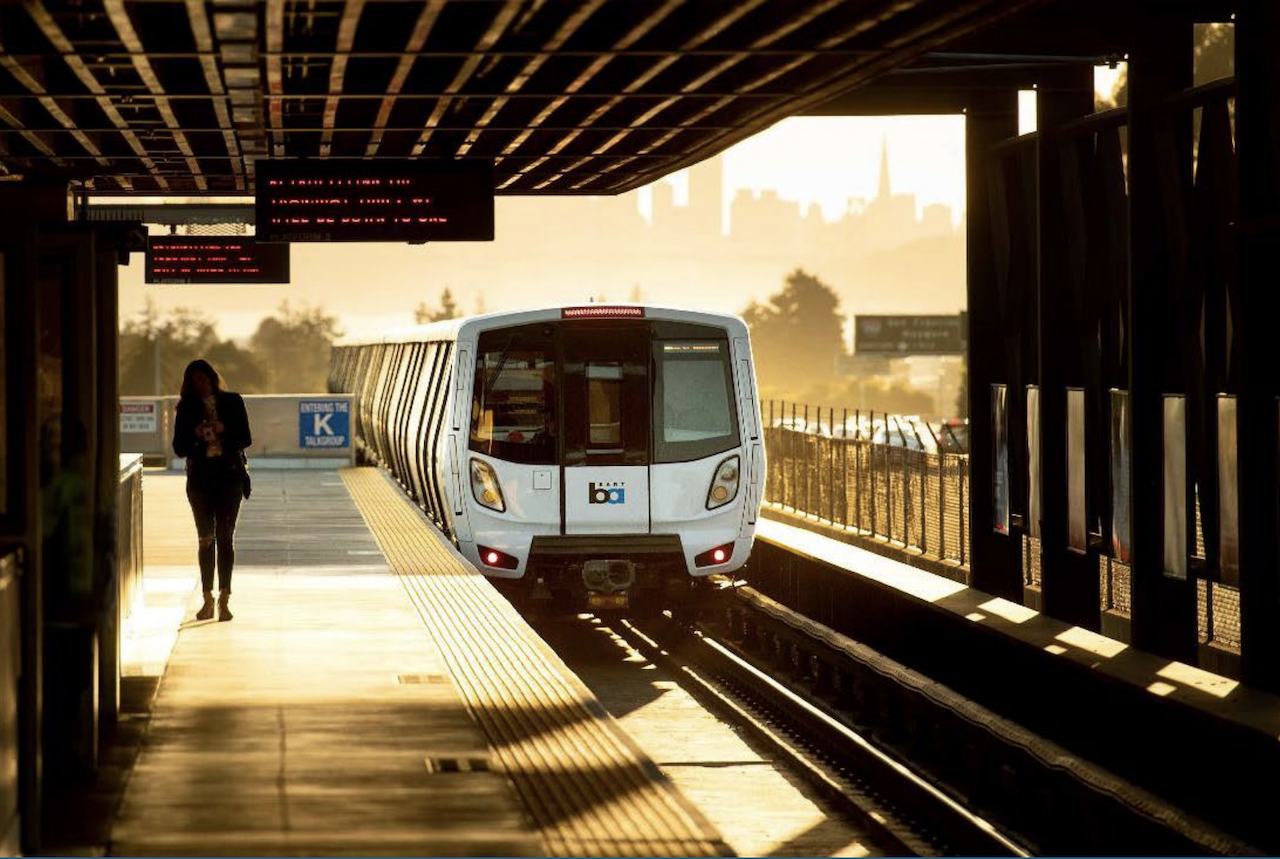
Transit Briefs: BART, TTC
Written by Carolina Worrell, Senior Editor
Bay Area Rapid Transit (BART) will launch a revised schedule, beginning Sept. 11. Also, the Toronto Transit Commission (TTC) welcomes subway 5G service and more stable 9-1-1 calling.
Beginning Sept. 11, BART will begin to shorten the length of its least crowed trains to “improve safety, allow for a cleaner fleet of cars, and maximize its scare resources,” according to the transit agency. The adjustment of train lengths, BART says, is consistent with its top priority of “ensuring BART is the safest way to travel around the Bay Area.” BART will still run long trains during special events.
According to BART, shorter trains mean:
- More police and safety presence.
- Cleaner trains.
- Only new trains will be in service unless there is a need to run an old train.
- Fewer delays because of new cars have doubled the reliability rate of old cars and BART will have more standby trains available.
- $12 million in cost savings.
While BART plans to run shorter trains, the agency says it will “very nimble and monitor crowded data on an hourly basis.” “Our commitment is to quickly add additional cars to trains if there is a high level of crowding, especially during peak commute hours. While we plan to launch this effort using 8-car and 6-car trains, we will quickly adjust as ridership grows,” BART adds.
Running trains with fewer cars, the agency says, will allow the BART Police Department to increase its visibility on trains and platforms while using the same number of staff. When there’s a call for service, officers can clear shorter trains much more quickly. Officers on train patrols will also be able to walk more of the in-service train cars.
“There is safety in numbers and that’s especially true on BART,” said BART PD interim Chief Kevin Franklin. “This change will allow us to have more eyes on train car as we continue to boost our visible safety presence with our officers and unarmed Transit Ambassadors and Crisis Intervention Specialists. A lot of unwanted behavior will be deterred through the presence of more riders and potential witnesses in every train car.”
Shortening trains, BART adds, allows the agency to run only Fleet of the Future trains for its base schedule. Legacy trains will still be used if they are needed during large events or if they are needed to replace a new train, but this move, BART says, “accelerates the retirement of the old fleet.”
The new trains, BART says, are much more reliable than legacy trains, as evidenced by the most recent Quarterly Performance Report (QPR). The QPR for April through June, shows the Mean Time Between Service delays for the new cars are more than double the length for that of the legacy cars; in other words, BART says, the new trains operate for more than twice as long before service delays.
“Our new cars are cleaner, require less maintenance, have better quality surveillance cameras, and offer a better customer experience with automated next stop displays and announcements,” said BART Chief Communications Officer Alicia Trost. “Feedback from our riders on the Fleet of the Future cars has been profusely positive so offering more new car rides is a great accomplishment in customer service.”
BART will hold a proper public retirement ceremony for the legacy fleet to mark their final run in service at a later date (likely in 2024).
Sizing trains for safety is a direct response to feedback gathered through the Not One More Girl anti-harassment initiative. “Eliminating empty and near-empty trains cars will create a safer, more welcoming environment for women, girls, gender non-conforming people, seniors, families, and all riders,” BART said. BART encourages people concerned about safety to ride in the first car closest to the Train Operator. These changes have the effect of bringing the first car closer to all riders. Courtesy announcements will be increased about priority seating, removing backpacks, and no bikes on crowded cars.
BART says it will realize cost savings and efficiency gains through this change and is expected to save about $12 million annually through reduced power consumption and cars logging fewer operating hours. “It will improve operational flexibility and cleaning crews will have fewer cars to focus on at end of the line stations,” the agency said.
“We want to show the entire region that we’re trying new things with safety in mind,” said Trost. “This is a change that will enhance safety and cleanliness while also saving money during our financial crisis without cutting service.”
TTC on Aug. 23 announced that customers with Rogers 5G Mobile can now access high-speed cellular service in several tunnels and stations on Lines 1 and 2.
Service is available in subway tunnels and at all stations on Lines 1 and 2 between Bloor-Yonge and St. George. 5G service is also available at Castle Frank, Sherbourne and Dupont stations, and at stations between Spadina and Keele.
Additionally, all customers—including those with Bell, Telus and other mobile service providers—will have more stable access to 9-1-1 emergency calling in the upgraded tunnels and stations, according to TTC.
Customers are reminded that in addition to dialing 9-1-1 in an emergency on the subway, they should always press the Yellow Emergency Strip located on the subway trains. Pressing the Yellow Emergency Strip immediately notifies the operator and Transit Control of an emergency and ensures the subway train stops at the next station and emergency personnel have been dispatched.
“Improving 9-1-1 calling for all customers is a significant milestone in bringing modern, high-speed connectivity to the TTC subway system,” said TTC Chair Jamaal Myers. “It is also an important step in increasing safety for riders and TTC employees.”
TTC says it continues to work closely with Rogers to schedule the work required to meet their commitment of completing the installation of high-speed cellular service in all TTC subway tunnels and stations within the next couple of years.
“The safety and security of TTC customers and employees is our number one priority. Improving the reliability of emergency calling on the subway is a core requirement of the new wireless technology,” said TTC CEO Rick Leary. “We look forward to the completion of the full build out and we encourage all the carriers to join the existing network to benefit our customers and theirs.”



